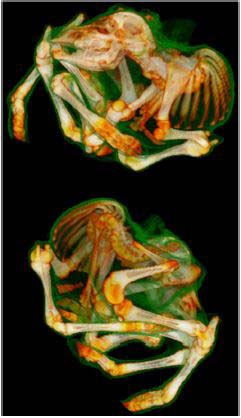Arthrogryposis Multiplex Congenita (AM) – A New Genetic Defect in Ayrshires
News and Updates
11/16/2021
A new genetic defect was recently reported in the Ayrshire breed. The condition is called arthrogryposis multiplex congenita (AM) and is commonly referred to as “curly calf.” The defect causes malformation of affected calves where the legs are severely curved with stiff joints. The calves are stillborn and most often cause calving difficulties. The condition is inherited as an autosomal recessive.

 The condition was first reported by researchers in Denmark based on cases of deformed calves in the Swedish Red breed. It appears the source animal for AM is the Swedish Red sire Peterslund. The frequency of carrier animals is estimated to be about 12 percent in the U.S. Ayrshire population and is approaching 20 percent in Canadian Ayrshires.
The condition was first reported by researchers in Denmark based on cases of deformed calves in the Swedish Red breed. It appears the source animal for AM is the Swedish Red sire Peterslund. The frequency of carrier animals is estimated to be about 12 percent in the U.S. Ayrshire population and is approaching 20 percent in Canadian Ayrshires.
The carrier status of an animal can be identified with reasonable accuracy from genomic test results. CDCB has begun providing these results for genomic tested animals. In addition, assays that directly test for the mutation that causes AM are available
from several DNA testing labs. Select Sires has completed the gene test on all our Ayrshire bulls with Peterslund in their pedigree and we have two current Ayrshires which are AM carriers: 9AY131 AMERICO and 9AY136 CHAOS.
We have submitted all other Ayrshire sires with semen available for AM testing but we do not anticipate identifying any additional carriers. A complete list of haplotype calls and/or gene test results will be reported along with the December 2021 genetic evaluations.
As previously noted, AM is inherited as a recessive trait. By using genetic test results and avoiding carrier by carrier matings, creating animals affected by AM can be completely avoided. This strategy avoids the economic loss caused by AM and allows our customers to continue to use the industry’s best genetics.
A similar condition also called “curly calf” has been reported in the Angus breed but the Angus version is caused by a mutation in a different gene located on a different chromosome.